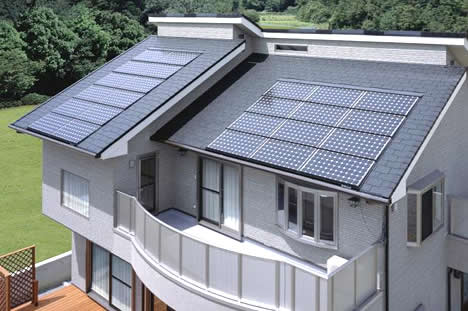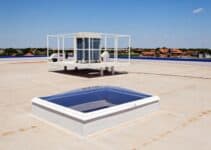Solar electricity is a renewable source of energy that has been with use since the onset of life. The sun is very promising as a source of energy. As much as solar was expensive in the past, during the last 30 years alone scientists have come up with a good and reliable way of tapping the energy from the sun. Solar energy is captured through solar panels and converted to solar electricity using Photovoltaic (PV) technology. PV solar panels are longer lasting and efficiently convert energy from the sun to electricity.
Solar power has two forms the thermal and photovoltaic. Each of these forms produces electricity different from each other.
Thermal Solar Energy
This is the most basic energy form and concentrates sunlight and them converts the light to heat. The heat is then applied to the steam generator. It is this steam engine, which is responsible for electricity production, which is thereafter used in powering industries and homes. It is also used in destroying hazardous waste, to heat water, to dry crops and heating buildings.
Solar Concentrators
Thermal power is operated with the help of solar concentrators, which uses Fresnel lenses to get a wider area of sunlight. This is then concentrated on an individual cell. The lenses looks more like dart board with each ring of the lens focusing on scattered sunlight into much more powerful beams. This creates the effect of magnifying glass. The concentration of sunlight gives power to the steam generator creating electricity.
Photovoltaic Solar Power
It is a much more popular form of solar power. It is also a direct electricity source. The system has solar cells made of a strong semi conductor material (silicon) which is found in abundance on the surface of the earth. The cells are then wired together forming solar panels, which are subsequently wired to a circuit. When the sunlight strikes these silicon cells, these panels generate electric current, which is connected to an external load and powers it. A single solar cell is not enough to produce sufficient electricity, therefore multiple cells are connected to each other to form a array of cells called solar modules or solar panels. Several solar cells or solar modules are again connected to each other to form a PV array. This is a basic framework model for producing electricity and number of panels can be connected to produce the desired electrical output.
PV cells are easy to maintain and require no maintenance. They might be a bit expensive but cost can be recovered in the long run. They produce no greenhouse gas emissions and are environment friendly. unlike, wind turbines or Hydropower stations that produce large noise, solar cells are silent and produce no such noise. For more information on PV solar panels, please read here.
Photons
This is a packet of solar energy providing a building block of the solar power (photovoltaic). When the photon hits the solar panel, the photon is reflected off that panel and at times can pass through it or gets absorbed by that panel. It is the photons absorbed by the solar panel, which generate electricity. When there has been enough absorption of these photons by silicon cells emitting of electrons takes place.
Electrons
These electrons are emitted by silicon cells. They gather on top of the silicon cells creating a charge imbalance. Silicon cells will have half of it bearing negative photons and the other positive photons. This effect is the same to the terminals of a battery, which has both negative and positive terminals. Therefore, when the ends of the solar cells are connected to external loan or an appliance there will be flow of electricity.
Advantages of Solar Electricity
1. Renewable source of electricity
2. The conversion of electricity is fast and immediate – very direct this means you do not need a generator if you have a solar panel
3. No moving parts and need minimal maintenance with no supervision
4. Can operate for between 20 and 30 years life-line
5. There is minimal or no environmental impact, as they do not give out any wastes
Disadvantages of Solar Electricity
1. Convert only a small oration of received light
2. Do not produce electricity when there is fog, cloudiness or smog
Applications of Solar Electricity
- Powering home appliances – These includes pumps and home appliances like refrigerators, laundry machines, dishwashers, TV and many more
- Heating the home – in winter or cold seasons the solar electricity helps in keeping the home warm. This is by collecting energy from the sun and using it to heat the house when it is cold. This is done through the process called convection. The warm air will circulate throughout the house heating it up in the process
There are many ways you can produce solar electricity without needing to relay on utility companies anymore. All that you need to do is to understand the process and buy the right tools that will make it all possible.
References:
http://www.electricityforum.com/solar-electricity.html
http://www.energymatters.com.au/renewable-energy/solar-power/






